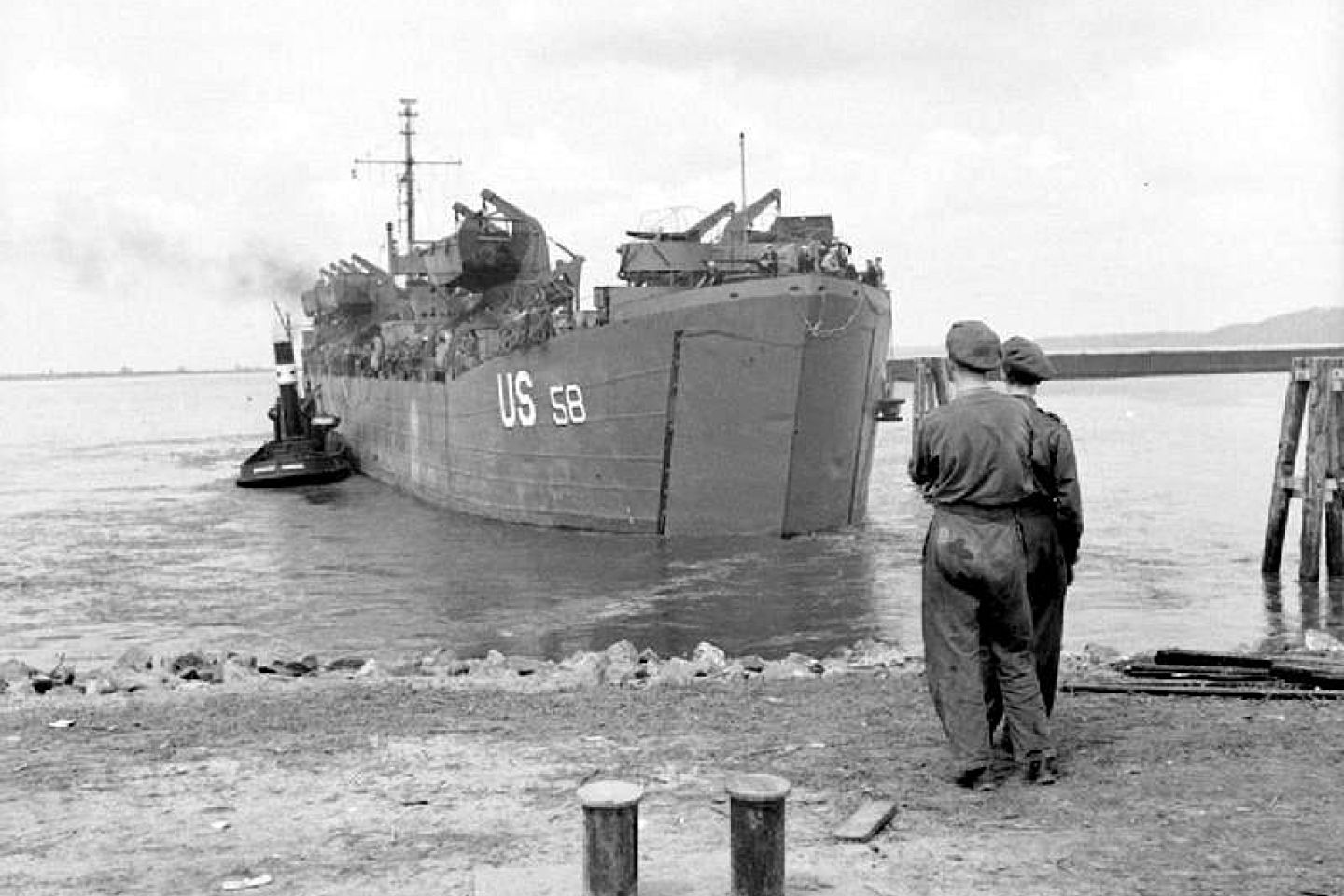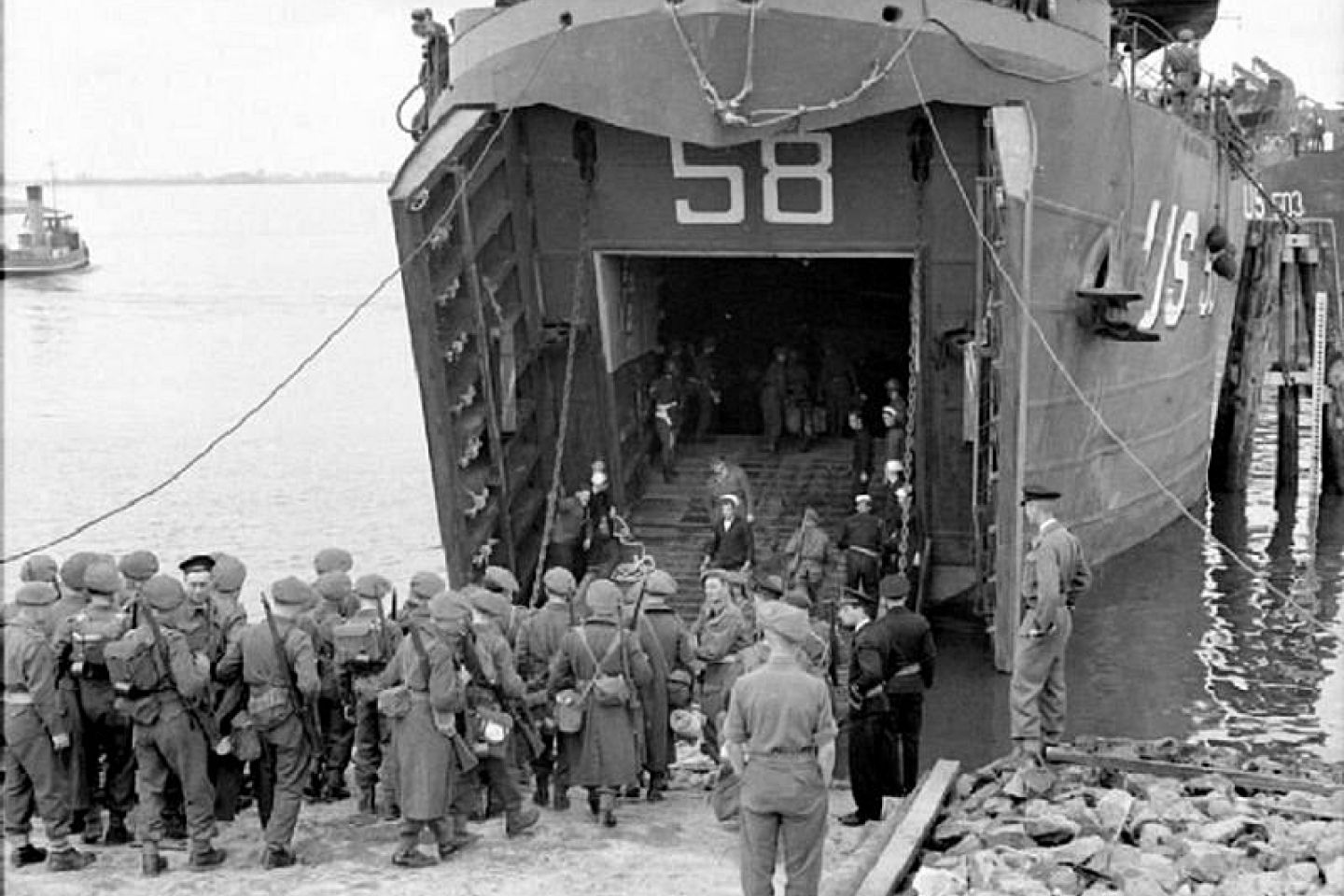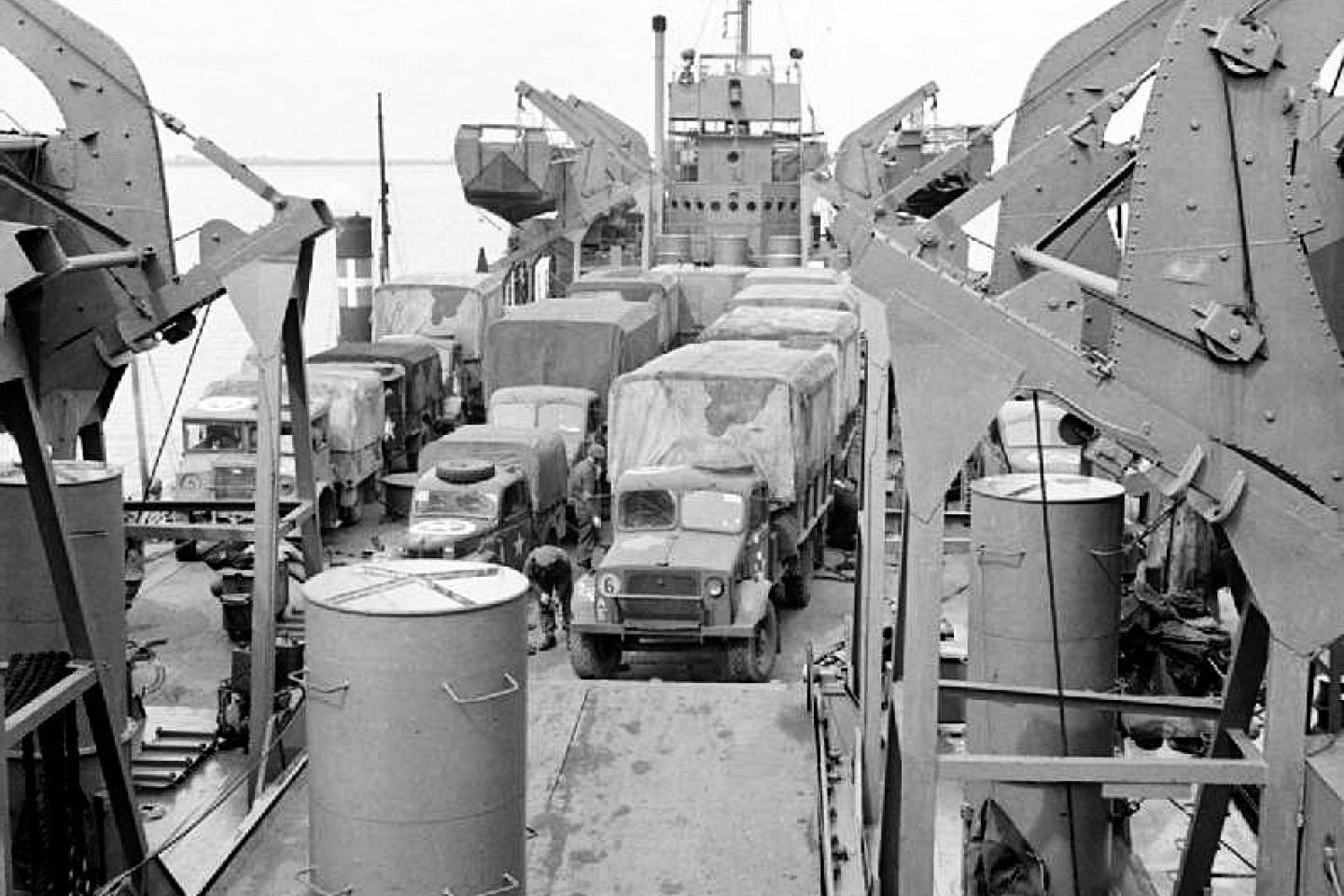USS
LST58
LST-58 was constructed on 31 October 1943 in Pittsburgh, Pennsylvania, by the Dravo Corporation. It was launched on 11 December 1943 and sponsored by Mrs. L. H. Crawford. The ship was commissioned on 22 January 1944.
USS LST-58 was sent to the European theatre during World War II and took part in the Normandy invasion from June 6th to June 25th, 1944. The ship was taken out of service on 7 November 1945 and officially removed from the Navy’s records on 28 November 1945. She was purchased by the Northern Metals Co. of Philadelphia, Pennsylvania on November 30, 1947, and later dismantled for scrap.
USS LST-58 was awarded a single battle star in recognition of its service during World War II.
Specifications: |
| |
History | LST-1 Class Tank Landing Ship (Mk 1):
| |
Commanding Officer(s) |
|
Images
Gallery




